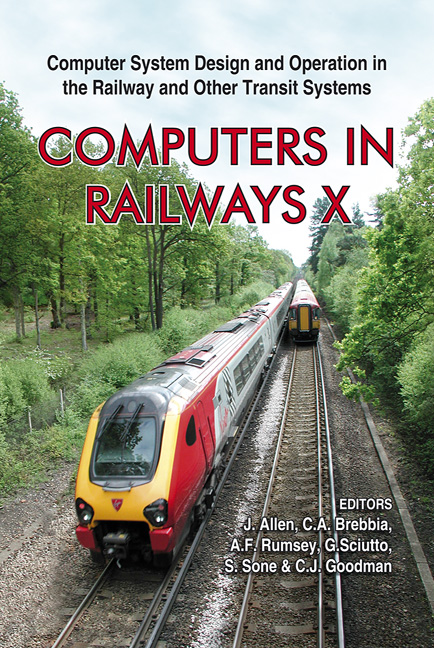An Algorithm For Braking Curve Calculations In ERTMS Train Protection Systems
Price
Free (open access)
Transaction
Volume
88
Pages
9
Published
2006
Size
350 kb
Paper DOI
10.2495/CR060421
Copyright
WIT Press
Author(s)
B. Friman
Abstract
The European Railroad Transportation Management Systems standard for train protection, ETCS, includes several advanced features for predicting the safe speed from a number of target locations ahead of the train. The braking system can have a different braking capability in different speed segments. The area in front of the train can contain a number of targets with different target and release speeds. The area in front of it is also segmented according to the gradients, in a way which is independent of the targets. The variables that shall be input to the braking curve algorithm therefore have three dimensions. Since permitted speed shall be calculated, rather than time to intervention, square roots are needed for the calculations, which require some computational power. The article suggests an algorithm where the gradients and the targets are combined in one table. This makes the input variable area two-dimensional instead of three-dimensional, which simplifies calculations and reduces the necessary number of square root calculations. Keywords: ETCS, ERTMS, braking curve, ATP. 1 Introduction The European Train Control System – the new European standard for automatic train protection, uses basically a three-dimensional set of data as input to the supervision algorithms. The three dimensions are: a table of speed restrictions, a table of gradient sections, and a table of deceleration abilities in relation to speed. The output from the algorithms is expressed in the form of speed values; e.g. which is the highest possible speed the train can run, in order to be able to
Keywords
ETCS, ERTMS, braking curve, ATP.





